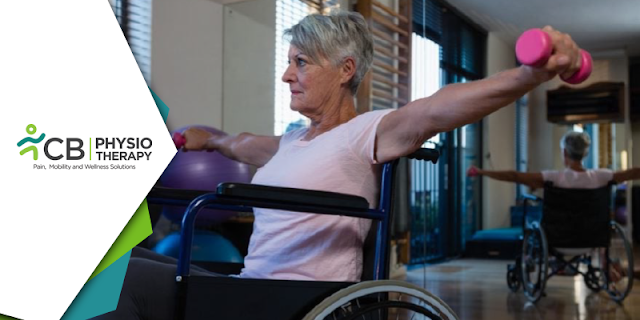Make Breathing Easier | The Benefits Of Physiotherapy In Asthma Prevention And Management
Asthma World Day is celebrated on the first Tuesday in May every year to raise awareness about asthma and its impact on people's lives. Asthma is a chronic respiratory disease that affects millions of people around the world, causing difficulty in breathing, wheezing, coughing, and other symptoms. This year's theme is "Asthma for All," which aims to highlight the importance of universal access to effective asthma care and management. One of the important ways to achieve this goal is through the role of physiotherapy in managing asthma.
Preventing Asthma
The first step in preventing asthma is to understand its causes. Asthma is a complex disease with multiple causes, including a family history of asthma or allergies, exposure to environmental pollutants, such as smoke, dust, and chemicals, respiratory infections, obesity, stress, etc. By identifying and addressing these risk factors, we can reduce the likelihood of developing asthma. Some of the ways in which we can prevent asthma include:
- Managing symptoms: People with asthma can manage their symptoms by taking their medication as prescribed, avoiding triggers, and monitoring their symptoms.
- Reducing exposure to environmental pollutants: We can reduce our exposure to pollutants by avoiding smoking, using air purifiers, and using natural cleaning products.
- Maintaining a healthy weight: Obesity is a risk factor for asthma, so maintaining a healthy weight through regular exercise and a balanced diet can help prevent asthma.
- Managing stress: Stress can trigger asthma attacks, so managing stress through techniques such as meditation and exercises can help prevent asthma.
- Vaccinations: Vaccinations can help prevent respiratory infections that can lead to asthma.
- Creating asthma-friendly environments: Schools, workplaces, and public spaces can be made more asthma-friendly by reducing exposure to environmental triggers and providing access to medication.
The primary goal of physiotherapy in asthma management is to improve lung function, reduce symptoms, and improve the quality of life for people with asthma. Physiotherapists use a variety of techniques to achieve these goals, including:
- Breathing Exercises: Physiotherapists teach breathing techniques, such as diaphragmatic breathing and pursed-lip breathing, which can help people with asthma breathe more efficiently and reduce shortness of breath.
- Airway clearance techniques: Physiotherapists teach airway clearance techniques, such as coughing and postural drainage, which can help remove mucus and other secretions from the airways.
- Exercise: Physiotherapists design exercise programs that are tailored to the individual needs and abilities of people with asthma. Exercise can help improve lung function, reduce symptoms, and improve overall fitness.
- Education: Physiotherapists educate patients about asthma, its causes, and its triggers. They also provide guidance on how to manage symptoms and prevent asthma attacks.
- Support: Physiotherapists provide emotional support to people with asthma and their families. They can help people with asthma cope with the emotional and psychological impact of the disease.
Benefits of Physiotherapy in Asthma Management
Physiotherapy can provide several benefits for people with asthma, including improved lung function, reduced symptoms, improved exercise tolerance, and improved quality of life.
- Improved lung function: Physiotherapy can help improve lung function, which can lead to reduced symptoms and better quality of life.
- Reduced symptoms: Physiotherapy techniques can help reduce symptoms, such as coughing, wheezing, and shortness of breath.
- Improved exercise tolerance: Physiotherapy can help improve exercise tolerance, which can help people with asthma stay active and maintain their overall health.
- Reduced hospitalizations: Physiotherapy can help reduce the need for hospitalizations and emergency room visits, which can be stressful and expensive.
- Improved quality of life: Physiotherapy can help improve the quality of life for people with asthma, by reducing symptoms and improving overall physical and emotional well-being.







